- 한국어
- English
- 日本語
- 中文
- العربية
- Español
- Français
- Deutsch
- Pусский
- Tiếng Việt
- Indonesian
By Honorary Reporter Ena Sofia Azcona Castillo from Mexico
Photo = National Museum of Contemporary History of Korea, Korea JoongAng Daily, Korea Stamp Society, Ena Sofia Azcona Castillo
"Gobau Yeonggam," or "Mr. Gobau," was Korea's oldest comic strip that ran for half a century, according to the Cultural Heritage Administration in Seoul.
Origins
This cartoon dates back to the beginning of the Korean War. At the time, its creator Kim Seong-hwan (1932-2019) was hiding in Seoul amid the chaos. A cartoonist who despite his young age had published a cartoon, "Meongteongguri Heonmulkyeogi" (An Idiot's Vain Efforts), in a newspaper, he spent a long time holed up at home, where he created up to 200 characters including Gobau.
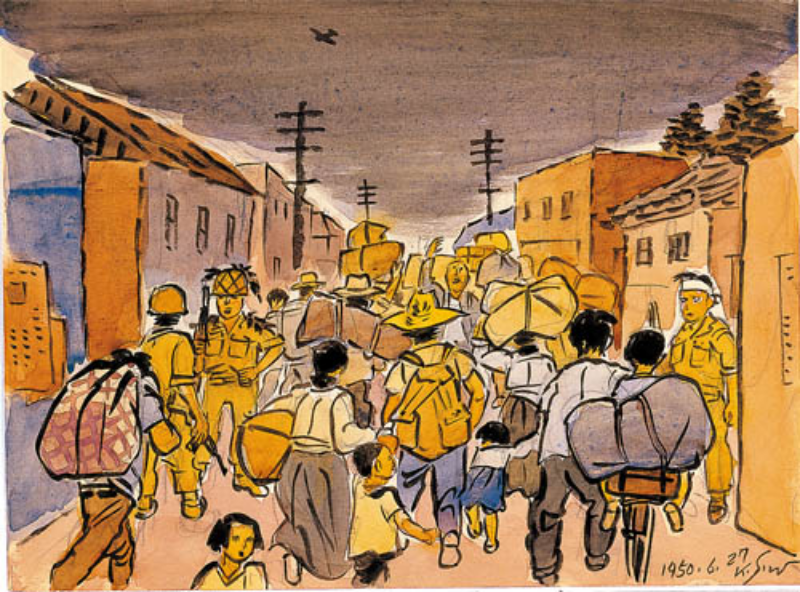
"Near Donam Bridge" is one of many drawings that Kim Sung-Hwan drew while confined to his attic in Seoul in 1950. (Korea JoongAng Daily)
Kim created "Mr. Gobau" based on his impression of a character whom everyone liked. The old man is physically short, has little hair, wears glasses and displays a blank expression. His scalp, however, symbolizes his psychology. The few hairs on his head express his feelings of surprise, anger, sadness, happiness or even embarrassment.
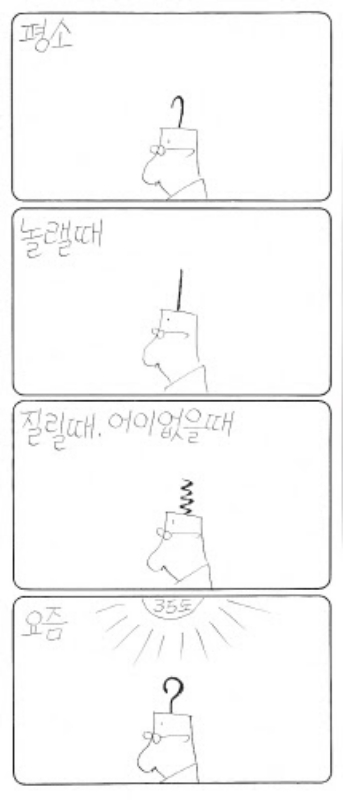
This comic strip appeared in The Chosun IIbo on Aug. 4, 1983, showing how Gobau's hair changes depending on the situation. (National Museum of Contemporary History of Korea)
Likewise, his physical appearance shows how the cartoon evolved over the years, especially through his clothing and composure. This factor made "Mr. Gobau" a successful comic as the character developed along with Korean society.
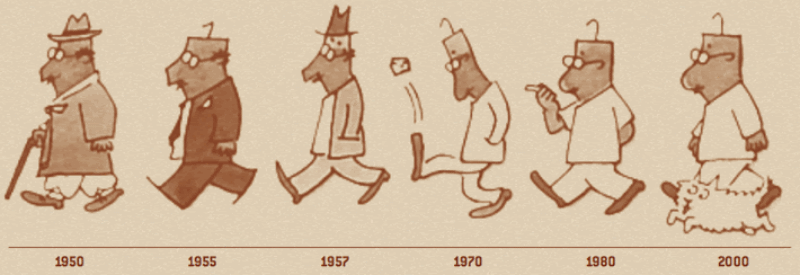
This shows the transformation of the protagonist in "Mr. Gobau" over the decades. Early on, he wore a felt hat and a thick mustache, had a robust body and wore mostly dark-colored clothing. By the 1960s, he had lost weight, stopped wearing his hat, focused on his hair and wore light-colored clothes. (National Museum of Contemporary History of Korea)
Rise to fame and evolution
The cartoon debuted in 1950 in the weekly comic publication Manhwasibo and was later carried by newspapers exclusively for soldiers. But not until the comic strip appeared in popular magazines did the character's fame begin to take off. "Mr. Gobau" later appeared in The Dong-A Ilbo (1955-80), The Chosun Ilbo (1980-92) and finally The Munhwa Ilbo (1992-2000), where the story ended.
Born during the Korean War, the comic strip featured many incidents in Korea's turbulent 20th-century history such as the April 19 Revolution of 1960, the assassination of President Park Chung-hee in 1979 and the military coup a year later, and the nation's industrialization of the 1970s and 80s.
Kim expressed current events through his work using simple but clear metaphors, as well as espousing a firm belief in freedom of expression. He displayed historic events in a unique and easily understandable comic style and captured the essence of the civilian voice in an ever-changing society.
In 2014, the National Museum of Contemporary History of Korea in Seoul opened an exhibition of "Mr. Gobau." Nearly 10,000 of the episodes in 2013 were designated National Registered Cultural Heritage Nos. 538-1 and 538-2 and a commemorative stamp was issued on its 50th anniversary in 2000.
With an estimated 14,139 published episodes, "Mr. Gobau" was the longest-running comic strip in Korean history.
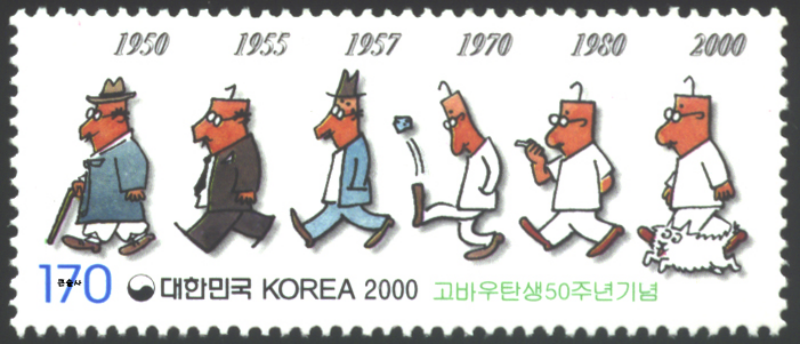
The Korea Post in 2000 issued a commemorative stamp on the 50th anniversary of "Mr. Gobau." (Korea Stamp Society)
Below are three of the many strips of "Mr. Gobau" over its five-decade run.
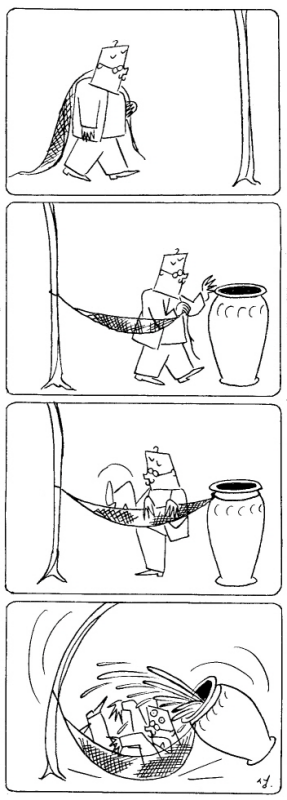
"Nap" was published by The Dong-A Ilbo on June 26, 1955. (National Museum of Contemporary History of Korea)
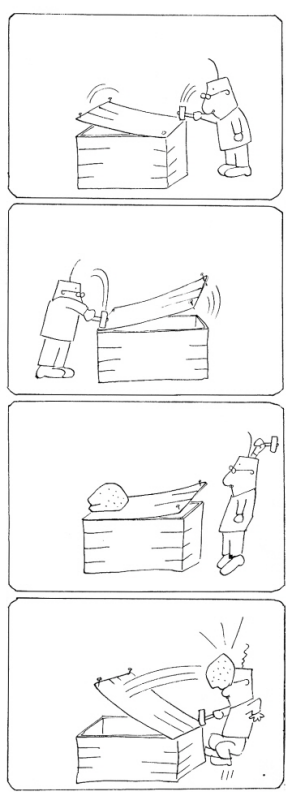
"A Box that Won't Close" was published by The Dong-A Ilbo on Jan. 7, 1963 (National Museum of Contemporary History of Korea)
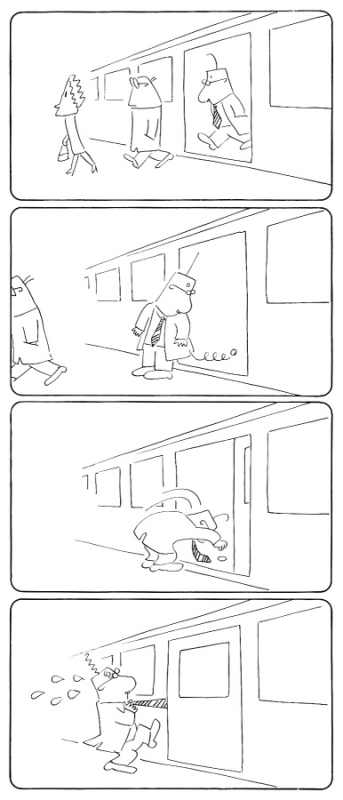
"Watch Out for the Door" was published by The Chosun IIbo on March 13, 1981. (National Museum of Contemporary History of Korea)
For more information on this historic comic strip, visit the portal of the National Museum of Contemporary History of Korea dedicated to the character in the link below. The site is entirely in Korean but those unable to read Hangeul can still enjoy it.
http://archive.much.go.kr/archive/go/cnts/intro.do
kalhong617@korea.kr
*This article is written by a Korea.net Honorary Reporter. Our group of Honorary Reporters are from all around the world, and they share with Korea.net their love and passion for all things Korean.